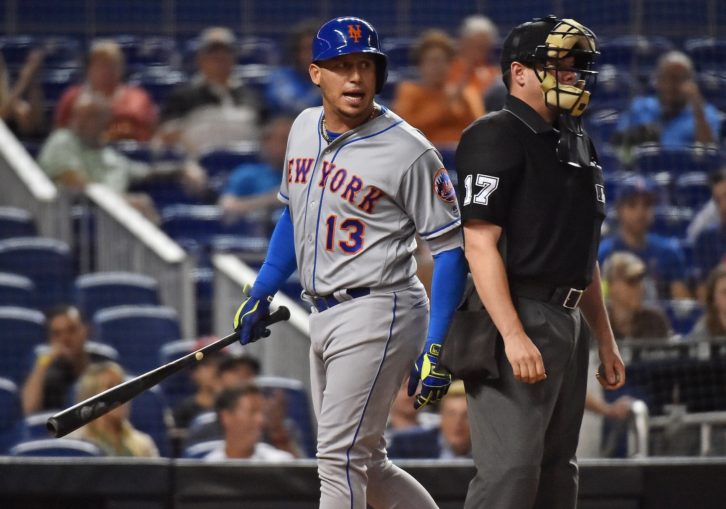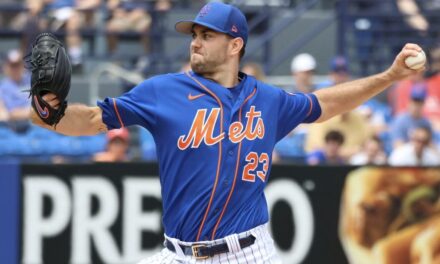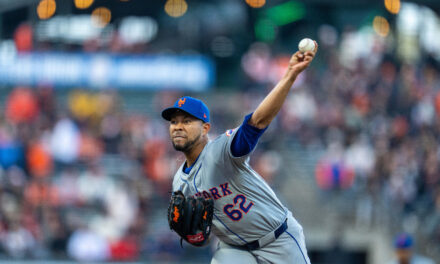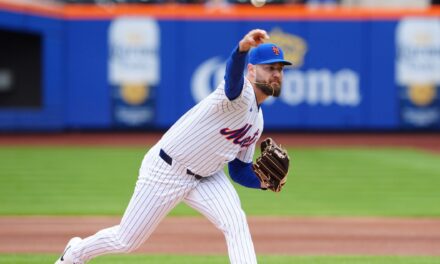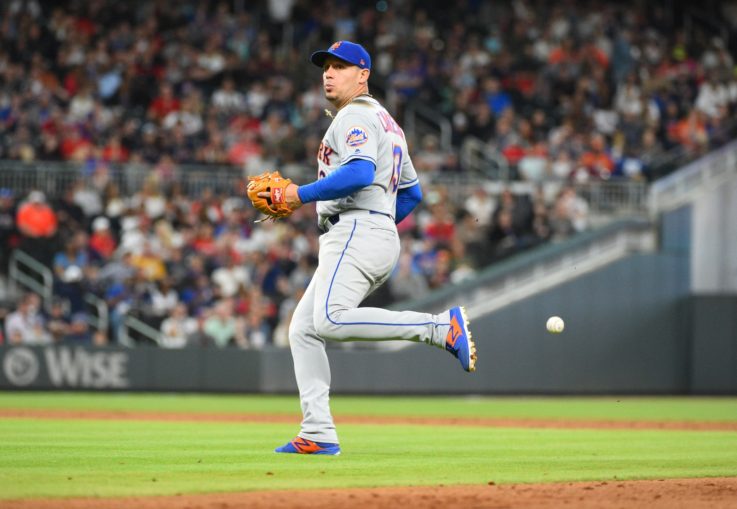
The Mets are playing horribly, and most teams at this point in the season are starting to plan a sell-off at the trade deadline. The Mets, however, are not sure about that yet as expectations coming into this season have put off that decision. If the Mets do decide to trade their veterans at the deadline, they have an extensive menu.
The problem is, those veterans have seen their trade value plummet due to poor play or injuries. Here we’ll take a look at seven trade pieces that the Mets hope pick up the pace before July 31st rolls around.
Asdrubal Cabrera
For the first two months of the season, Asdrubal Cabrera was the Mets’ best hitter — no question. After hitting as high as .356 on April 16th, he hovered around .320 for a long time. On May 29th, Asdrubal Cabrera was hitting .315 and still riding high. It’s now June 6th and he’s hitting .286. He’s playing very poor second base and, recently, been dragging the team down on offense as well. What gives?
On May 26th, Cabrera “tweaked” his knee in a game against the Brewers. In the four games directly after that, he went 5-for-15 with three home runs and five RBIs. That’s great, but when you play through an injury, you risk making it worse.
In the 14 games since then, Cabrera is 4-for-50 (.080) with one double and one home run. He is also playing atrocious second base, recording -10 DRS and -9.4 UZR/150 on the season. Did he make his knee worse by playing through it? Maybe. But even when 100% healthy, his range at second base was limited to say the least. That, paired with his sliding offense, is cause for concern.
His overall numbers are now down to .268/.307/.472 with 11 home runs, 31 RBIs, and a 113 wRC+.
In the last year of his contract, Cabrera is due to earn $8,250,000 this season. If he were to turn it around and get his average back up towards .300 where it was for the first segment of the season, he could fetch a decent return from a team that needs an infield bat. For now, though, his value is very limited.
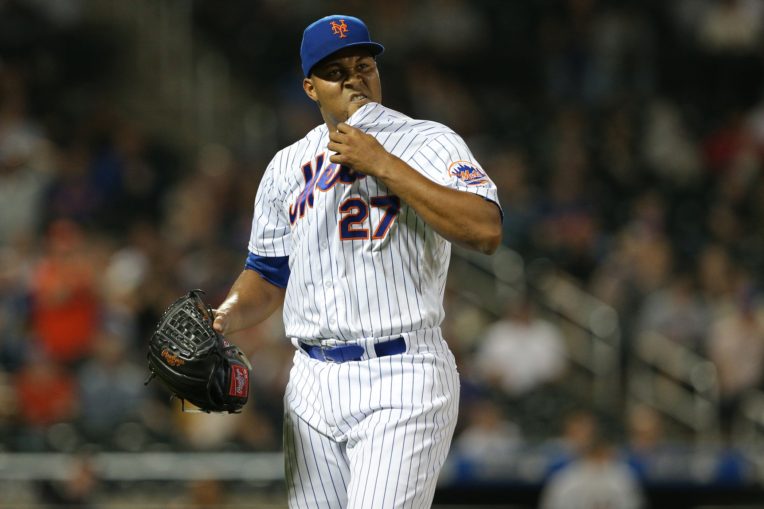
Jeurys Familia
Like him or not, Jeurys Familia has been one of the better relievers in the game since 2015. The problem is, while he could still fetch a decent return on the trade market, his value is at an all-time low.
After pitching just 24.2 innings in 2017 due to a right shoulder injury, Familia finds himself back on the disabled list with an injury to the same shoulder. He has pitched well overall when healthy, pitching to a 2.48 ERA and 2.29 FIP across 29.0 innings and 14 saves. He has struck out 33, walked nine, and allowed 27 hits good for a 1.241 WHIP.
He’s got phenomenal stuff, and any contending team would like to add a reliever at the deadline. The question is not whether or not the Mets will be able to trade him; the question is whether or not the Mets will be able to bring in a return fitting for an elite closer.
Jerry Blevins
Coming into this season, Blevins was one of the best LOOGY’s in the game. He has been so bad in that role this season that he has been treated as a normal reliever. Unfortunately, even in that role, he has struggled to the tune of a 5.17 ERA in 30 appearances. In 15.2 innings he has struck out just 12 batters, walking 11 and allowing 16 hits. That amounts to a 1.723 WHIP, much too high for a reliever.
The big problem has been his effectiveness against left-handed batters, or rather, his lack thereof. Lefties are hitting a whopping .342/.405/.500 against him with three doubles and a home run in 42 plate appearances after hitting .197/.250/.205 against him in 2017. With a .455 OPS in 2017 and a .905 OPS in 2018, the difference has been absolutely stark.
The weird thing is that he’s pitched better against right-handers than he’s ever pitched against lefties. In 31 plate appearances, righties are hitting just .130/.355/.174 with that high on-base percentage being attributed to the fact he walked eight of them.
The 34-year-old will be a free agent at the end of this season, during which he’s due to make $7 million. If he does not turn things around against lefties, something he has not shown signs of doing, he will not fetch anything if marketed as a LOOGY. This is an interesting situation, though, as if he continues to dominate right-handed batters, he can be marketed in that way.
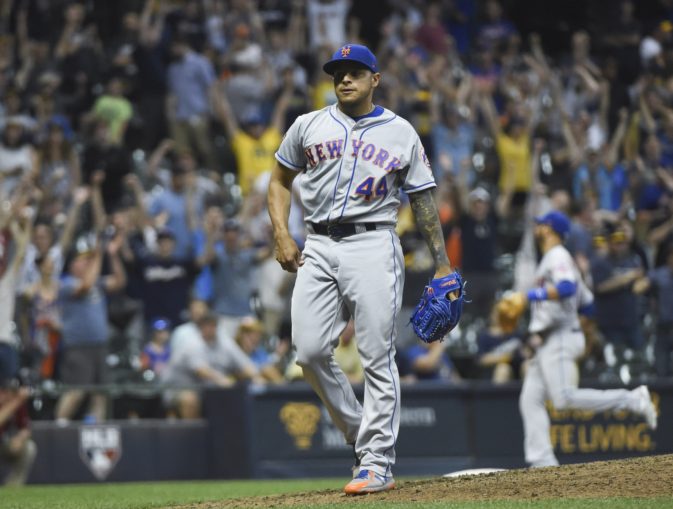
AJ Ramos
Remember him? AJ Ramos has been on the disabled list since he last pitched on May 26th with right rotator cuff tendinitis and has no timetable to return. The Mets have even contemplated surgery for the right-hander, something that would obviously eliminate him from having any trade value whatsoever in July.
Even if healthy, though, his value is at an all-time low. Appearing in 28 games, Ramos had an unsightly 6.41 ERA, 5.12 FIP, and 1.627 WHIP. That high WHIP can be attributed to his lack of command, as he walked 15 batters in 19.2 innings (6.9 BB/9) and allowed 17 hits. The only silver lining, if it can even be called that, would, be his 22 strikeouts.
A very good reliever for the Miami Marlins from 2013 to 2016, Ramos used to be very valuable. Now with arm problems, a 4.60 ERA since the start of 2017, and a $9,225,000 contract for this season, his value seems to be all but gone.
Jay Bruce
Since 2008, Jay Bruce has been one of the most consistent power hitters in the game. After socking a career high 36 home runs in 2017, the Mets awarded his efforts with a 3-year, $39 million contract. So far, that decisions seems to be a major mistake.
Through 61 games this season, the 31-year-old is hitting .216/.297/.327 with just three home runs, 17 RBIs, and a 74 wRC+. He is struggling big time, and as we saw last season, he might not fetch much on the market. This year is different, however, as he’s signed through the next two seasons, owed $14 million in each. Being under team control for those two seasons may help or hurt his value depending on his destination. But one thing is for sure, if he continues to struggle, no team anywhere will take on that contract and the Mets have a self-inflicted burden on the books.
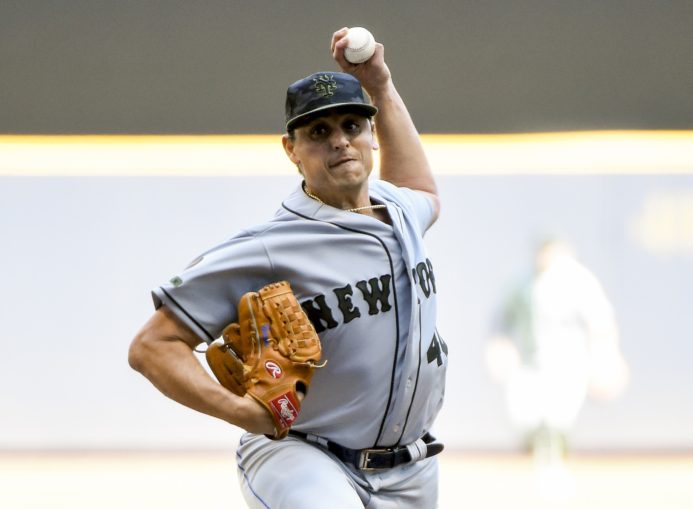
Jason Vargas
This past offseason, the Mets went out looking for a starting pitcher to fill an innings-eater role. They settled on Vargas, signing the 35-year-old to a two-year, $16 million contract with an $8 million club option for 2020. After winning an MLB-most 18 games and making the All Star Team last season, he has not been up to snuff so far in 2018. In eight starts, Vargas has gone 2-5 with a 7.39 ERA, 5.58 FIP, and 1.698 WHIP. In 35.1 innings he has walked 14 and struck out 32.
He just plain has not been good, not fulfilling the innings-eating role the Mets signed him for as he’s not thrown a pitch in the 6th inning this season. He is old, does not throw hard at all, and has not been effective. Further, he is making a lot of money. Unless he puts together a string of quality starts between now and July 31st, he’s going to be in a Mets uniform this and next season for sure.
Yoenis Cespedes
Cespedes, 32, is in the second year of a four-year, $110 million deal. He’s due to make $29 million this and next season and $29.5 million in 2020. If he were healthy and playing as well as he could, the Mets would be able to move him for a decent return. But he has not been playing well, he has not been healthy, and to top it all off, he has a full no-trade clause in his contract.
Before going on the disabled list with a strained right hip flexor (and staying there with a quad injury), Cespedes hit .255/.316/.474 with eight home runs and 28 RBIs in 37 games. In hindsight, his enormous contract seems to be extremely ill-advised. But after hitting 66 home runs between 2015 and 2016, the Wilpons opened up their wallets for him, and now they’re stuck with him.
It’s still only June, so the Mets have time to decide whether they’re going to sell or buy at the deadline. That all depends on how well they play between now and then, and a lot of players on this list will have a significant part in that.
It would be a disappointing season if the Mets weren’t contenders and had to sell at the deadline, but it would be far more disappointing if, when forced to sell, they couldn’t bring back any good prospects.


